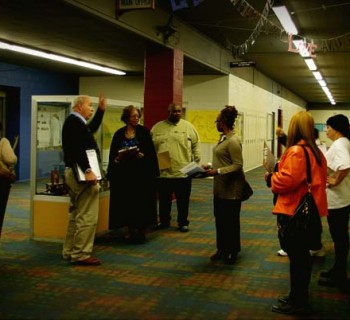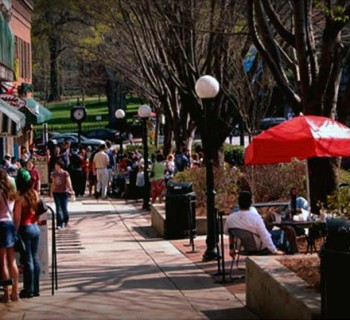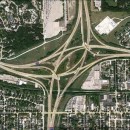OPINION—By August of this year, the Michigan Department of Transportation must adopt a complete streets policy for roadways under its jurisdiction as part of a 2010 law designed to promote safer access to our roadways. Complete Streets is a movement that designs and operates roadway corridors promoting safe access for all users, regardless of age and ability. Roadways therefore should accommodate vehicles, transit, bicyclists and pedestrians of all physical abilities.
The Complete Streets Advisory Council has drafted a policy statement for Michigan, which will be discussed at a public meeting in Lansing, Thursday, July 26. It goes a long way toward fulfilling the legislation by providing a consistent, proactive statewide plan that defines complete streets and says that such roads improve safety and the quality of life in Michigan. It further calls for a process to plan, fund, design, construct, maintain and operate complete streets that respect context and community values.
I applaud the advisory council for truly defining the value and potential that complete streets can provide. Indeed, I scarcely believe such a document could have been produced even five years ago.
Unfortunately, the council’s draft policy, much like the 2010 legislation itself, is really just a starting point. The very process it depends upon will likely be a roadblock to the implementation of complete streets improvements in any meaningful way on our state’s trunkline roadways. This is because the policy continues to approach the entire concept of complete streets as if it were an add-on feature to whatever project is in the works. It misses the bigger opportunity for every road project to start and end with the question, “how can this road become more complete?”
Complete streets are not simply a toolbox of amenities or a checklist to be followed, but rather a philosophical statement about what a community believes in. It is a concrete (and sometimes asphalt) reflection of a community’s values in much more real terms than any mission statement about walk-ability or context sensitivity.
"... the policy continues to approach the entire concept of complete streets as if it were an add-on feature to whatever project is in the works. It misses the bigger opportunity for every road project to start and end with the question, 'how can this road become more complete?'" ~ Scott Clein
Complete streets speak to safety, while also addressing economic development and general quality of life. The design of our roadway corridors impacts more than traffic flow, but the very vitality of our communities. Roadways are a significant portion of a community’s public space and therefore say a great deal about what that community holds dear.
Roadway corridors should therefore be designed holistically. Simply providing sidewalks and curb ramps (even if designed properly) are not enough. Are the sidewalks appropriately sized for adjacent land uses, such as commercial activity or outdoor dining? Is the pedestrian experience pleasing? Have you accommodated cyclists?
This is not to say that vehicles should be forgotten. Michigan put the world on wheels, after all. Indeed, due to the multi-modal nature of Michigan’s future roadways, we must be more concerned about vehicles. Clear and reasonable pavement markings and signage must be maintained in order to allow drivers to concentrate on the task at hand. More to the point, the very size and shape of our roadways must be designed in a manner that promotes a safer and slower usage by drivers.
The draft policy therefore needs to make it clearer that vehicular demand and non-motorized needs are not exclusive of one another. While well intentioned, the policy should require that complete streets be part of the overall design of the roadway. Instead, the policy calls for an analysis almost after the fact that has too many ways to opt out of complete streets, as context and cost can be interpreted multiple ways depending on who is overseeing the process.
Positive wording in the draft policy encourages MDOT to take a network approach to non-motorized access, since complete streets must be connected for users to have a safe, effective way to get from Point A to Point B. But one troubling aspect is language that allows MDOT to consider that parts of the road network outside of MDOT’s jurisdiction might provide a more viable alternative and safer access for non-motorized users.
On the surface this sounds reasonable. After all, why put people at risk when a safer alternative is available a block away? Again, this thinking misses the point of complete streets and would seem to make it even easier to exclude state-owned surface roads from the process when, frankly, there should be no exceptions. There should be levels of design for every road, interstates notwithstanding, that increases safety for legal users.
One of the most heartening paragraphs in the Complete Streets Advisory Council’s two-page policy says, “Complete streets and their viability can be impacted by planning and permitting as well as infrastructure. MDOT will work with local governments as needed to encourage thoughtful planning and permitting that supports the goals and the vision of this complete streets policy.”
It is encouraging to see a state policy take the first steps toward shifting the emphasis of road design to people instead of steel. Now we need local and county governments as well as residents to get behind this movement. A complete streets policy on paper is a good start. But people need to understand how and why it will improve safety and the quality of life, and accept that it will mean a new way of looking at the state’s roadways, in order for it to become reality.










